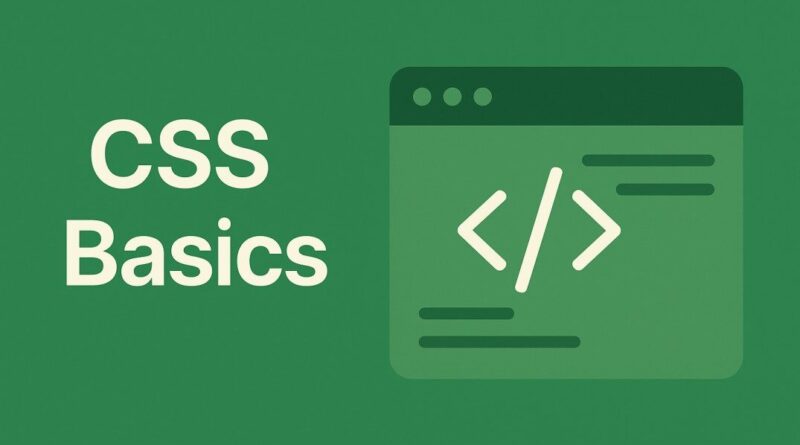CSS – Unlocking Layout Perfection: Why box-sizing is Your CSS Superpower!
Unlocking Layout Perfection: Why box-sizing is Your CSS Superpower!
Ever found yourself battling with CSS layouts? You set a width, add some padding, and suddenly your element is wider than you expected, throwing everything off? If so, you’re not alone! This common headache stems from a fundamental CSS concept: The Box Model.
But fear not, because today we’re going to demystify one of its most powerful properties, box-sizing, and show you how it can transform your web design workflow. Get ready to achieve predictable layouts with ease!
The CSS Box Model: A Quick Refresh
Imagine every HTML element on your webpage as a rectangular box. This isn’t just a metaphor; it’s how browsers render everything. This “box” is made up of several layers:
- Content: This is where your actual text, images, or other media live.
- Padding: The space between your content and the border of the box. Think of it as internal breathing room.
- Border: The line that goes around your padding and content.
- Margin: The space outside your border, pushing other elements away.
Sounds straightforward, right? Well, here’s where box-sizing comes into play and saves the day!
The Tale of Two Box Models: content-box vs. border-box
The box-sizing property dictates how the browser calculates the total width and height of an element when you specify its width and height properties. There are two main values, and understanding their difference is crucial for predictable layouts.
1. content-box (The Default, and Often the Culprit!)
By default, all elements in CSS use box-sizing: content-box;. What does this mean?
When you set a width (e.g., width: 200px;) using content-box, that 200px applies only to the content area. If you then add padding or a border, these will be added on top of your specified width.
Example:
CSS
.my-element {
width: 200px;
padding: 20px; /* 20px on each side */
border: 5px solid black; /* 5px on each side */
box-sizing: content-box; /* (Default, often implicit) */
}
In this scenario, the total actual width of .my-element will be: 200px (content) + 20px (left padding) + 20px (right padding) + 5px (left border) + 5px (right border) = 250px
See the problem? Your 200px box suddenly becomes 250px wide! This is why elements can unexpectedly overflow their containers or mess up your carefully planned grids.
2. border-box (Your Layout’s Best Friend!)
Now, let’s introduce box-sizing: border-box;. This is where the magic happens!
When you set a width (e.g., width: 200px;) using border-box, that 200px now includes the content, padding, AND border. The browser automatically subtracts the padding and border from the specified width to determine the content area.
Example:
CSS
.my-element {
width: 200px;
padding: 20px;
border: 5px solid black;
box-sizing: border-box; /* The game changer! */
}
With border-box, the total actual width of .my-element will remain exactly 200px! The padding and border are contained within that 200px.
This means: 200px (total width) - 20px (left padding) - 20px (right padding) - 5px (left border) - 5px (right border) = 150px (content area)
Why border-box is Crucial for Predictable Layouts
Adopting border-box as your standard is a best practice that many professional developers swear by. Here’s why:
- Intuitive Sizing: When you set
width: 50%;, you truly get an element that takes up 50% of its parent, regardless of padding or borders. This is incredibly helpful for responsive design! - Easier Calculations: No more complex math to figure out how padding and borders will affect your element’s overall size.
- Grid System Bliss: If you’re working with CSS Grid or Flexbox,
border-boxmakes column sizing and spacing much more predictable and manageable. - Reduced Layout Jitter: Say goodbye to elements unexpectedly jumping around because their total size changed.
The Universal border-box Trick
To leverage the power of border-box across your entire project, a common and highly recommended approach is to set it globally:
CSS
/* A fantastic snippet for modern CSS development */
html {
box-sizing: border-box;
}
*, *::before, *::after {
box-sizing: inherit;
}
This snippet does two powerful things:
- It sets
box-sizingtoborder-boxon the<html>element. - It then uses
inheritfor all other elements (*) and their pseudo-elements (::before,::after), meaning they will automatically adopt thebox-sizingvalue from their parent. This ensures consistent sizing throughout your entire project.
Takeaway
The CSS Box Model is fundamental, but the box-sizing property is the key to mastering it. By switching from the default content-box to the more intuitive and predictable border-box, you’ll save yourself countless hours of debugging, achieve more robust and responsive designs, and ultimately become a more efficient web developer.
So go ahead, embrace border-box in your next project, and watch your layouts snap into perfect alignment!



